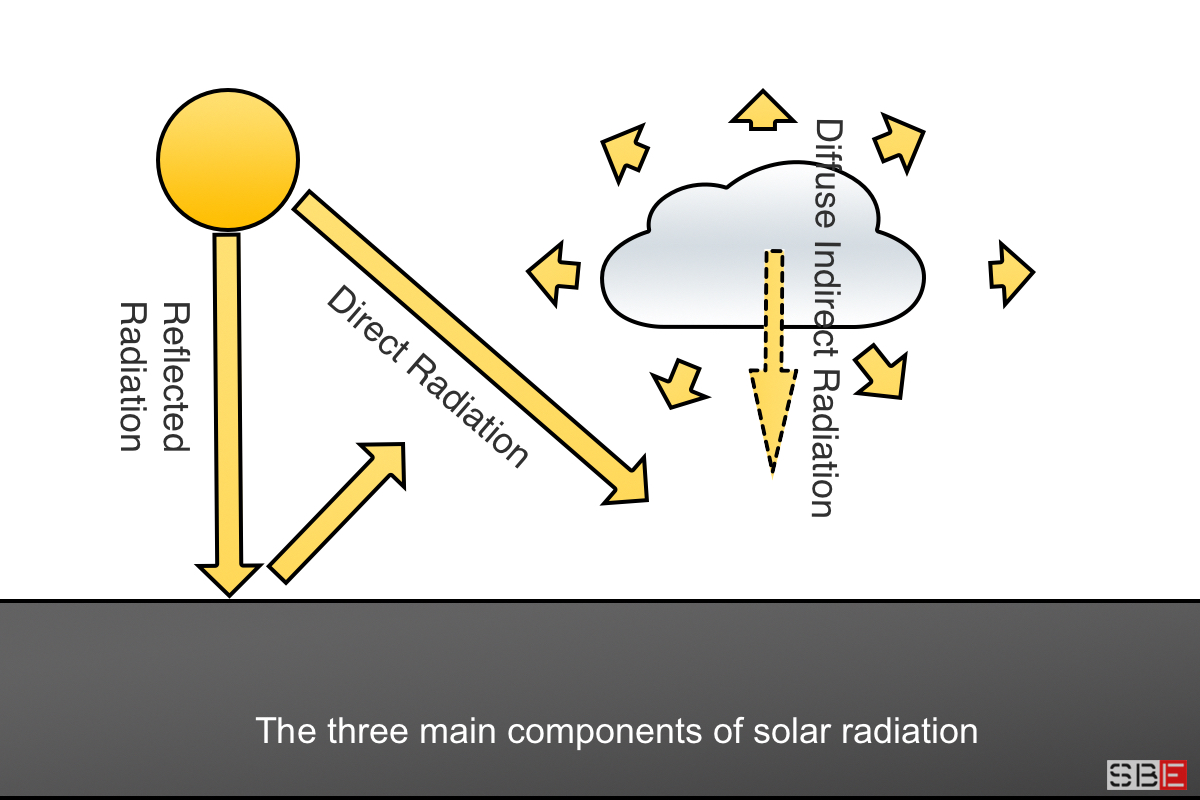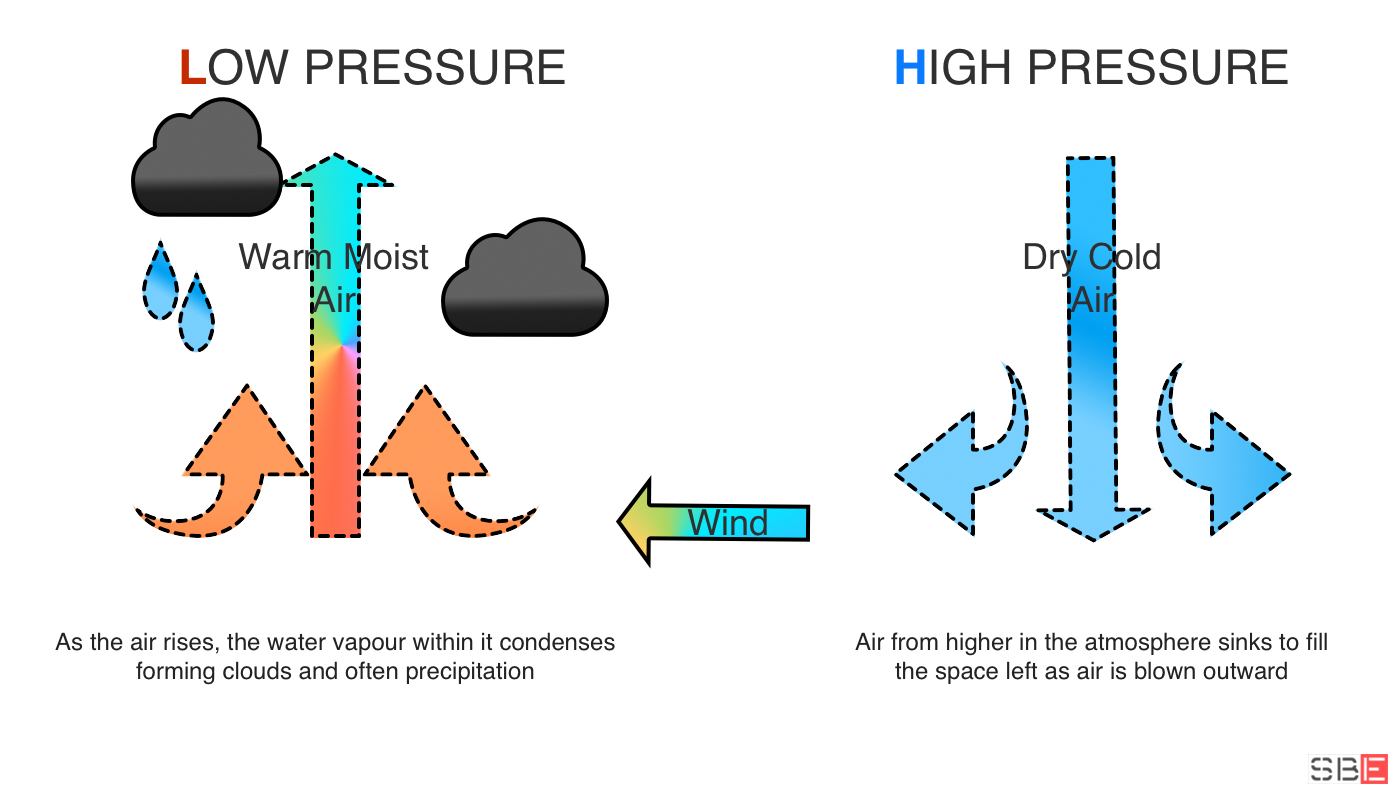Temperature and Humidity
Temperature
The air and the earth’s ground are heated:
- Directly – by solar radiation,
- Indirectly – by the molecules of the air itself, but above all,
- Reflected – by the heat stored by Earth, which gradually releases it.

The minimum temperature occurs immediately before sunrise at 04:00 UTC; the maximum shortly after the Sun’s Zenith, around 14:00 UTC. The difference in temperature between the minimum and the maximum is called Thermal Excursion. The temperature decreases with the altitude, on average 0.6 ° every 100 meters. The temperature measuring instrument is the mercury thermometer.
Humidity
Humidity measures the percentage of water present in the atmosphere. There are three types:
Absolute humidity – Specific humidity – Relative humidity.
- Absolute humidity measures grams of water in one cubic meter of air.
- Specific humidity measures the number of grams of water in a kilogram of air.
- Relative humidity measures the maximum amount of water a given air volume can contain.
The latter is the one we are interested in for meteorological purposes.
We can measure relative humidity with hygrometers or psychrometers. The psychrometer, also present on the bridge wings of ships, is composed of a dry thermometer and a thermometer whose bulb is wrapped in gauze and soaked in distilled water. Both thermometers are in the shade in a ventilated box. The difference between the temperatures measured by the two thermometers gives us the measure of relative humidity. Unique tables provide the possibility to interpolate the two values.
The more significant the difference between the two thermometers is, the less humid the air, and vice versa.

__________
Variations in temperature and humidity create convective movements of air.
As the temperature increases, the air, as it heats up, expands and becomes lighter. Consequently, the hot air masses tend to rise while those of cold air tends to descend.
As we saw in the previous paragraph, the pressure decreases as the atmospheric humidity increases because humidity has a lower density than the gases present in the atmosphere. It causes humid air to rise while dry air tends to descend.
Let’s try to understand in practice what happens:
When the warm, humid, and light air rises, the atmospheric pressure drops; consequently, the air expands and, as it cools, forms clouds; when the suspended water vapour condenses, it forms rains. Due to Coriolis force, the air converges towards the centre, rotating counterclockwise in the Northern and clockwise in the Southern hemisphere. We are in ‘low-pressure’ areas or ‘cyclonic areas’. Cyclones can be identified on weather charts by closed elliptic isobars decreasing from the periphery towards its centre.
When the cold air, denser and heavier, descends, it squeezes the air below, heating it, and the atmospheric pressure rises. The air decreases volume, and the water vapour does not condense or form clouds or rain. The air moves from the centre by rotating clockwise in the Northern and counterclockwise in the Southern hemisphere. We are in the presence of ‘high-pressure’ areas or ‘anticyclonic areas’. Anticyclones can be identified on weather charts by closed elliptical isobars decreasing from the cyclone’s centre to the periphery.

Remember that: the points with the same atmospheric pressure in the weather maps are concentric lines called isobars.
